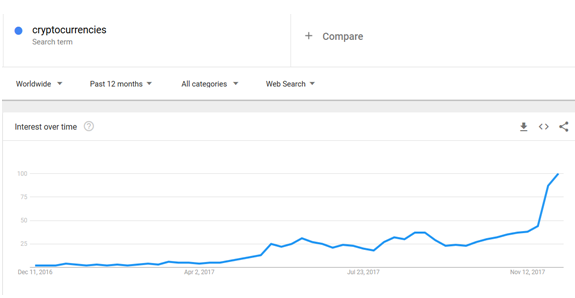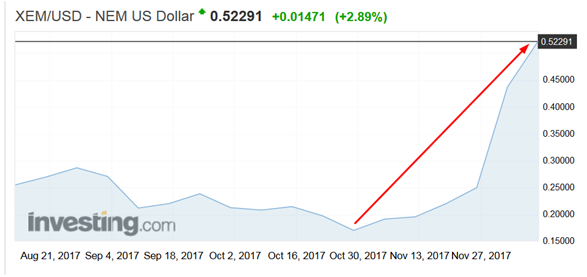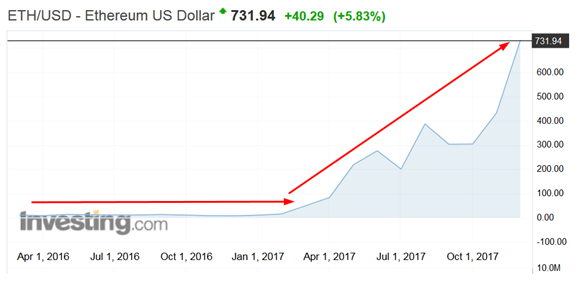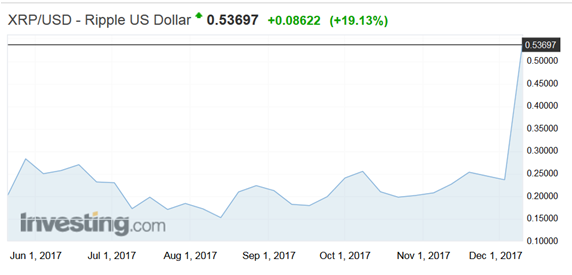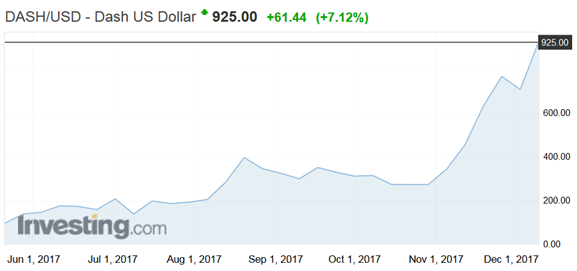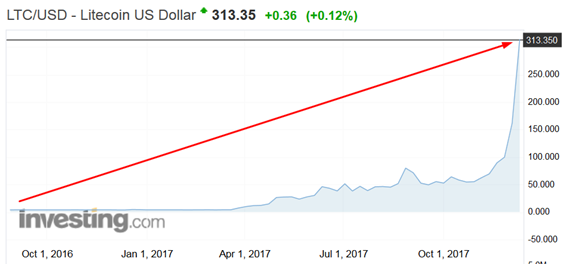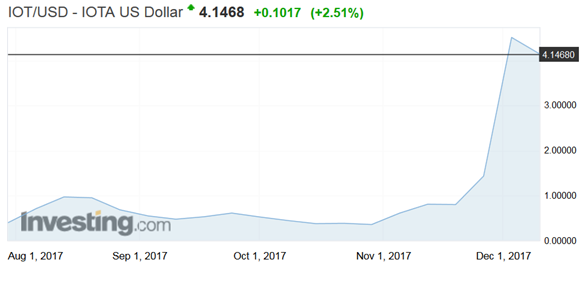Se quiser surfar a…
… TERCEIRA ONDA DE VALORIZAÇÃO DO IMOBILIÁRIO EM PORTUGAL
Uma nova oportunidade está a surgir e poucas pessoas a identificaram. Entre essas pessoas está Artur Mariano que, ao utilizar uma estratégia própria, está a obter retornos até +27% ao ano.
Não perca a novidade que a Empiricus preparou para lucrar com esta nova onda.
Caro leitor,
proponho que preste atenção a esta mensagem por uma única razão: a conclusão desta história pode fazê-lo ganhar muito dinheiro.
É tão simples quanto isso.
Quando falo em dinheiro, não me refiro a uma percentagem qualquer.
É sobre grandes retornos que quero falar-lhe hoje, de +20%, +40%, +52%.
Por isso vou já direto ao assunto.
Uma terceira ONDA de valorização do mercado imobiliário está a formar-se
Repare neste gráfico que apresenta o comportamento do preço das habitações em Portugal em quase uma década:

Como pode ver, o preço médio das habitações em Portugal já ultrapassou a máxima de 2008, valores pré-crise.
O setor está, inegavelmente, em alta.
Gostaria que prestasse atenção, no entanto, a um pormenor que faz toda a diferença.
Acabei de referir que este índice representa a média mas, como vai ver já a seguir, muita dessa valorização esteve concentrada nos grandes centros urbanos, exatamente como previmos em 2015:

Neste caso específico falámos de retornos de +46% e até mais.
A pergunta que agora lhe coloco é: já pensou que valorizações trará esta nova onda?
+10%, +20% ou +30%?
Melhor ainda do que conhecer os ganhos potenciais é saber onde é que esta onda se está a formar e com que estratégia poderá surfá-la.
É isso mesmo que vai ficar a conhecer já de seguida.
Mas antes preciso que esteja a par das razões pelas quais aconselhamos o investimento em imobiliário:
1 – O imobiliário é o único mercado onde pode adquirir ativos abaixo do valor de mercado.
2 – Os imóveis são tangíveis, são ativos que pode ver e tocar.
3 – Os imóveis serão sempre necessários e por isso, a longo prazo, é expectável que o seu valor cresça.
4 – Os preços dos imóveis são menos voláteis.
5 – Os imóveis têm mais vantagens fiscais.
Todos estes pontos são desenvolvidos mais adiante, como lhe iremos explicar.
Para nos ajudar a compreender este fenómeno, não convidei um mero teórico da área que nunca tinha investido neste setor.
Desafiei um grande especialista na matéria com provas dadas na prática no mercado de imóveis alemão e português, entre outros.
 O seu nome é Artur Mariano. Ele vai explicar a melhor forma de aproveitar esta nova onda de valorização.
O seu nome é Artur Mariano. Ele vai explicar a melhor forma de aproveitar esta nova onda de valorização.
Além da capacidade para prever a terceira onda de valorização do imobiliário em Portugal, o Artur teve a coragem de lançar este alerta. E juntos, estamos hoje aqui, para partilhar consigo esta oportunidade.
Atenção: Não nos estamos a referir ao que toda a gente sabe e que foi amplamente noticiado nos média.

Referimo-nos a uma descentralização do investimento imobiliário.
As grandes oportunidades de investimento – e o imobiliário não foge à regra – estão precisamente onde pouca gente está a olhar.
Por esta ordem de ideias, os melhores negócios não podem estar onde está o rebanho.
Concordará comigo que não é numa agência imobiliária que vai encontrar as melhores oportunidades…
Até porque, quando a procura é muita para os mesmos ativos, os preços tendem a subir.
A terceira onda está a formar-se fora dos lugares óbvios, amplamente divulgados pelos jornais e que já estão demasiado precificados.
É de zonas pouco exploradas, mas com um grande potencial de originar retornosextraordinários, que lhe estamos aqui a falar.
Pessoas comuns que acumulam lucros medíocres ou até mesmo inexistentes nas suas aplicações bancárias vão conseguir retornos bem mais apetecíveis com esta oportunidade que lhe vou indicar.
O Artur é a pessoa que identificou este ciclo específico graças à estratégia que ele utiliza há anos, depois de uma década a investir em imobiliário, e que lhe tem trazido rentabilidades de até +30%.
Skin in the game, como dizem os americanos. Ele acredita de tal forma no setor que começou a investir no imobiliário muito cedo.
A sua estratégia foi precisamente fruto do seu trabalho de pesquisa teórica colocada em prática. Com alguns erros mas muitos mais acertos ao longo do caminho.
Tudo isto ele irá partilhar consigo.
Engenheiro informático de formação, o seu gosto por números levou-o a tirar um PhD em criptografia – que trocando por miúdos é matemática aplicada – na melhor universidade do mundo na área, na Alemanha.
É, no entanto, no setor imobiliário que se sente como peixe na água. De tal forma que criou uma empresa de consultoria com foco no imobiliário através da qual contacta com investidores de todo o mundo.
Com toda essa experiência acumulada, ele já ajudou investidores de mais de 10 nacionalidades diferentes a investir em Portugal, entre as quais americana, britânica e brasileira.
Mais do que bater por muito o mercado, o Artur sabe como poucos identificar novas oportunidades e dar dinheiro a ganhar aos seus seguidores.
Sejam eles nacionais ou estrangeiros que procuram investir parte do seu capital numa moeda mais forte e obter um visto gold como brinde.
Acredite: ele é a pessoa certa para juntar-se à nossa equipa e fazê-lo lucrar com esta raríssima oportunidade de multiplicação de capital.
Para já deixamos-lhe um conselho: esqueça as grandes cidades como Lisboa e Porto onde já não encontrará imóveis a serem vendidos a preços abaixo do seu real valor.
Esta nova onda a que o Artur se refere está a espalhar-se dos grandes centros para localizações específicas às quais o leitor terá acesso dentro de poucos minutos.
Novamente uma chamada de atenção: não estamos a falar nem de uma zona qualquer nem de todos os tipos de habitação.
Apenas as que o Artur recomendar.
O que este especialista sabe (que o leitor não sabe)
Passaram-se meses até o Artur ver concluído o documento imprescindível para quem quer começar a investir nesta área, seja residente em Portugal ou não.
A estratégia que ele vai partilhar hoje consigo é a mesma que ele usa para os seus investimentos imobiliários.
Neste momento o Artur conta com 14 imóveis e um investimento acima do meio milhão de euros.
Ele vai acompanhar de perto as oportunidades de investimento que estão a surgir neste setor.
E a boa notícia é que, neste caso, não precisa de tanto capital inicial para investir. Com €60.000 já poderá começar a investir no imobiliário.
Porque tão importante quanto comprar barato é comprar na hora certa.
E a hora certa para investir na terceira onda é AGORA se quiser conseguir lucros até +52%.
Por essa razão resolvemos antecipar em dois meses o lançamento deste documento imprescindível.
Avaliar imóveis com a estratégia que o Artur criou e utiliza nos seus negócios pessoais, permite dizer com relativa segurança se se trata de um bom ou mau investimento.
Entre outras mais-valias, a estratégia do Artur permite:
- Avaliar diferentes mercados para saber se é altura para comprar ou eventualmente vender.
- Encontrar imóveis para buy-and-hold (comprar e arrendar) a preços abaixo do valor de mercado e que por isso tragam de retorno yields (taxas de retorno de capital) acima dos +15% ou até dos +20%, por ano sem contar com a valorização do imóvel.
- Encontrar imóveis que tenham bons yields e que os gerem de forma totalmente passiva (sem que necessite cobrar rendas ou reparar canos rotos) e em certos casos sem ter que pagar pela manutenção.
- Encontrar imóveis com rentabilidade garantida – isto é, que tenham contratos de arrendamento de mais de 8 anos já em vigor.
- Calcular rentabilidades e perceber se a alavancagem é benéfica para o seu caso. E se for, como negociar com os bancos.
- Indicar o passo-a-passo para cidadãos estrangeiros que queiram investir no imobiliário em Portugal. Tudo o que precisa saber, estará nesta série.
… e muito muito mais!
A terceira onda já está em marcha e não espera por si.
O Artur tem vindo a estudar diferentes mercados imobiliários espalhados pelo mundo ao longo dos anos e chegou a uma conclusão muito importante:
o tamanho do mercado não implica necessariamente que o rácio da procura e da oferta seja pior ou melhor.
Passo a explicar: se, por exemplo, numa grande cidade existirem 50.000 compradores para um apartamento, não nos coloca necessariamente mais perto de vender essa mesma casa do que numa cidade pequena com apenas 500 interessados.
Isto porque se existirem 100.000 apartamentos disponíveis para venda na cidade maior e apenas 250 na mais pequena, estatisticamente falando, teremos mais oportunidades vender o nosso apartamento na cidade de menor dimensão.
Dois bons exemplos que ilustram esta situação vêm dos Estados Unidos da América. Um deles é Detroit.
Em 1990 aquela cidade tinha mais de um milhão de habitantes. Hoje tem menos de 70% disso:

No exemplo oposto, ou seja, de uma cidade que tem crescido a olhos vistos está Tampa, na Florida, que passou de 280.000 habitantes em 1990 para mais de 377.000 hoje em dia.

Fonte: World Population Review
Como tal, o valor do imobiliário também subiu muito nesta última cidade.
Para ter uma ideia, quem tivesse comprado imóveis em Tampa há 10-15 anos teria tido um retorno de quase 1.000%, ou seja, uma média +66% ao ano.
O ponto aqui a ter em conta é que uma cidade grande pode decrescer em população (e em valor imobiliário) e que outra pequena pode subir e muito.
Ou por outra, o tamanho de uma cidade e o seu potencial de crescimento não estão necessariamente relacionados.
Contextualizando para a realidade portuguesa, num cenário como o atual – juros baixos, alta procura externa e oferta de novas construções limitada – a valorização expressiva que já aconteceu nos centros das principais cidades tende a replicar-se noutros sítios.
O que estou a querer dizer com isto é que em Portugal ainda existem Tampas por esse país fora, onde pode, com um baixo orçamento conseguir retornos extraordinários.
Mas atenção, investir no momento ou no local errado pode comprometer a sua riqueza ao longo de uma vida. Leu bem – toda a vida.
É para evitar uma situação destas que o Artur está aqui hoje.
Ele é a pessoa mais capacitada para identificar os fatores por detrás deste fenómeno e indicar-lhe, com precisão, como e onde ganhar muito dinheiro com esta terceira ondado imobiliário em Portugal.
A hora H para o imobiliário
Observe o gráfico seguinte que se refere à média de transações de imóveis num estudo feito pela ArrowPlus, referente aos últimos 24 meses.

Como se pode aperceber, ainda há muito espaço para conseguir grandes valorizações fora dos principais centros urbanos portugueses.
Para esta nova oportunidade de investimento muito têm contribuído os juros baixos que estão em mínimos históricos.

Fonte: Empiricus Research; Banco de Portugal
E como já aqui referimos, há ainda o investidor estrangeiro que está a comprar imóveis para utilizá-los como habitação permanente ou simplesmente atraído pelos retornos do setor muito superiores ao resto da Europa.
Afinal só o ano passado vimos investidores oriundos de mais de 40 países investir em Portugal.

Não podemos ignorar o que está a acontecer.
É algo que poderá ter desdobramentos inevitáveis para o seu bolso. Falamos de potenciais valorizações de +52%.
Sim, estamos no meio de um terceiro fenómeno de valorização.
E o leitor precisa tomar medidas rápidas para se aproveitar o mais rapidamente possível desta oportunidade.
Para fechar, veja o gráfico seguinte:

Repare como do lado da oferta, a construção de novos fogos está em níveis muito baixos e totalmente inadequados para a procura que é altíssima.
O cronómetro está em marcha.
Quanto mais rápido se posicionar, maior será a sua oportunidade de obter lucros.

O meu nome é Pedro Gonçalves e sou editor-chefe da Empiricus Portugal.
Com a ajuda do Artur Mariano vamos mostrar-lhe como ganhar muito dinheiro com esta janela no imobiliário que se abriu.
Ao contrário do que muita gente pensa, este setor é muito mais que um instrumento de proteção do património.
É também uma forma de obter lucros avultados, como vimos anteriormente e sem investir muito logo de início.
Convém lembrar que somos uma casa independente de análise de investimentos.
Por isso, temos a liberdade para lhe recomendar o melhor do mercado.
Deixar as suas poupanças de uma vida num depósito a prazo é deitar dinheiro à rua, não me canso de repetir isso.
É preciso aproveitar as boas oportunidades.
Assim sendo, preparámos uma novidade aos interessados neste tema.
Após termos lançado dois produtos relacionados com o imobiliário, uma minissérie e um curso….
… criámos um plano anual para que tire o máximo partido desta nova onda de valorização
Chama-se Investidor Imobiliário
O objetivo é oferecer um acompanhamento constante e acessível a toda a gente que queira investir na terceira onda de valorização do imobiliário em Portugal e por isso a sua periodicidade será quinzenal.
Para fazer parte da comunidade de investidores imobiliários da Empiricus basta querer ganhar percentuais na casa dos +50% e gostar do tema imobiliário.
Não precisa ter conhecimentos em finanças ou economia.
Se não estiver a olhar para este setor como um investimento e quiser apenas comprar casa própria também vai beneficiar desta assinatura.
Da mesma forma que se já possuir um imóvel e quiser saber se está na altura certa de vendê-lo…
… esta mensagem também é para si.
Investir em imóveis não é só saber comprar, é também saber vender na hora certa.
Foi para isso que criámos o plano Investidor Imobiliário, para dar-lhe o passo a passo.
Queremos oferecer algo prático com acesso ao máximo número de pessoas possível.
Como tal, os relatórios estarão escritos de uma forma simples para que todos possam entender.
Sem dúvida que a compra de um imóvel é o maior investimento unitário que qualquer um de nós fará ao longo da vida.
E os portugueses sabem disso melhor que ninguém uma vez que são dos povos que detêm mais propriedades relativamente aos seus congéneres europeus.
Se perde um dia a procurar o melhor preço para as calças que quer comprar, ou uma semana para poupar 10% na nova televisão, quanto tempo e dinheiro acha que deve investir na compra da sua casa?
Não há qualquer outro bem em que deva investir tanto tempo para se educar sobre o mercado.
Mas não precisa desperdiçar as suas horas à procura dessa informação.
Quinzenalmente, o Artur vai fazê-la chegar a si.
O que parecia impossível há alguns meses começa agora a materializar-se.
O leitor não pode ignorar esta terceira onda no setor imobiliário.
Em breve saberá quais são os locais onde esta possível valorização de +52% está a começar a acontecer.
Um potencial realmente avassalador.
Já imaginou o que poderia fazer com esse lucro?
– Garantir uma educação melhor para os seus filhos
– Construir um colchão de liquidez que possa dar segurança financeira à sua família
– Permitir a realização dos seus sonhos…

É possível que ainda esteja incrédulo com o tamanho da oportunidade que está à sua frente.
Aqui na Empiricus queremos que aproveite ao máximo esse potencial.
O que deve fazer agora para ganhar com esta terceira oportunidade
1#) Se quiser investir no imobiliário deve fazê-lo agora
O Artur preparou um plano anual de relatórios quinzenais que explicam em detalhe esta terceira onda de valorização.
Ele vai partilhar consigo todo este material já de seguida.
Desta forma terá acesso, em primeira mão, às principais conclusões de um verdadeiro especialista no setor.
Esta série pode poupar-lhe anos de erros… aqueles que ele próprio cometeu ou viu outros cometer. E vai trazer-lhe conhecimentos que ele levou anos a adquirir.
#2) Siga à risca o que o Artur Mariano aconselha
A nossa recomendação é que não se aventure em investimentos que não valham a pena.
Lembre-se que a estratégia do Artur já lhe trouxe retornos extraordinários. Ele testou com o produto das suas poupanças o seu próprio método e está aqui hoje para compartilhá-lo consigo.
Para que possa conseguir retornos até +52%.
Mas é preciso posicionar-se já.
Só com as informações contidas nos dois primeiros relatórios do Investidor Imobiliário a que terá acesso hoje já seria suficiente para mudar completamente o modo como olha para este setor.
No entanto, o Artur vai continuar a entregar novos relatórios a cada 15 dias.
Trata-se de informação obrigatória que o colocará numa posição muito vantajosa se quiser ganhar muito dinheiro neste setor.
Está a um passo da decisão financeira mais importante da sua vida
Pode ficar parado e assistir a uma nova onda de valorização do imobiliário…
… enquanto outras pessoas começam a ganhar dinheiro com esta janela de oportunidade.
A opção é sua.
Se decidir tomar as rédeas do seu património financeiro para si, com uma atitude simples, poderá mudar de uma vez por todas o padrão financeiro da sua família.
Pelo menos passe os olhos no trabalho sério que o Artur desenvolveu.
Tenho a firme convicção de que terá toda a informação necessária para investir de forma certeira o seu dinheiro.
Ao experimentar a série Investidor Imobiliário, o leitor terá acesso imediato a:
– Relatório I – Fundamentos base do investimento em imobiliário
– Relatório II – É afinal o interior de Portugal um bom ou mau lugar para investir em imobiliário?
– Relatório quinzenal Investidor Imobiliário – Quinzenalmente o Artur vai apresentar-lhe os seus estudos sobre imobiliário, bem como oportunidades únicas para investir na terceira onda do imobiliário. Se for um investidor estrangeiro saberá ainda como dar os primeiros passos para comprar casa em Portugal.
Gostou da minha proposta?
Talvez esteja a pensar que todo este conteúdo lhe vai sair caro…
Se reparar o preço normal da assinatura na nossa loja é de 99,99 euros.
No entanto, o preço especial de lançamento do Investidor Imobiliário é de apenas €49,95 ao ano.
Exclusivamente através desta mensagem pagará um valor tão baixo. A nossa ideia é ter um produto acessível a toda a gente e como tal o preço não pode ser um impedimento.
Reforço, são menos de €5 ao mês, alguns cêntimos ao dia, para conseguir obter retornos até +52%.
Não acha que esse pequeno investimento vale a pena?
QUERO INVESTIR NA TERCEIRA ONDA DE VALORIZAÇÃO DO IMOBILIÁRIO
Estou convicto de que os nossos leitores vão proteger milhares de euros dos seus patrimónios e ganhar outros tantos.
E mais interessante ainda é poder ter acesso a todo esse trabalho desenvolvido durante meses sem nenhum tipo de risco ou obrigação.
Isto porque, durante os primeiros 20 dias, caso tenha acesso à série Investidor Imobiliário e, por alguma razão entenda que ela não encaixa no seu perfil, basta solicitar a interrupção da assinatura que verá o seu dinheiro reembolsado.
Isso mesmo, receberá 100% do dinheiro investido.
Ao concordar com os termos aqui apresentados estará apenas a aceitar experimentar o trabalho desenvolvido pelo Artur Mariano para ver se gosta e com isso terá acesso integral a esta terceira onda que lhe poderá gerar lucros até +52%.
Espero que considere seriamente a minha oferta até porque a onda já se começou a formar e quanto mais cedo se posicionar maiores serão os seus lucros.
Tenho a forte convicção de que esta será uma das melhores decisões financeiras que tomará em toda a sua vida.
Para começar confirme a sua assinatura clicando no botão abaixo que irá levá-lo a uma página 100% segura.
A sua ordem será processada imediatamente e terá acesso a todo o nosso trabalho no mesmo minuto.
QUERO LUCROS EXTRAORDINÁRIOS COM A TERCEIRA ONDA DE VALORIZAÇÃO DO IMOBILIÁRIO
Até breve,
Pedro Gonçalves







 O seu nome é Artur Mariano. Ele vai explicar a melhor forma de aproveitar esta nova onda de valorização.
O seu nome é Artur Mariano. Ele vai explicar a melhor forma de aproveitar esta nova onda de valorização.














